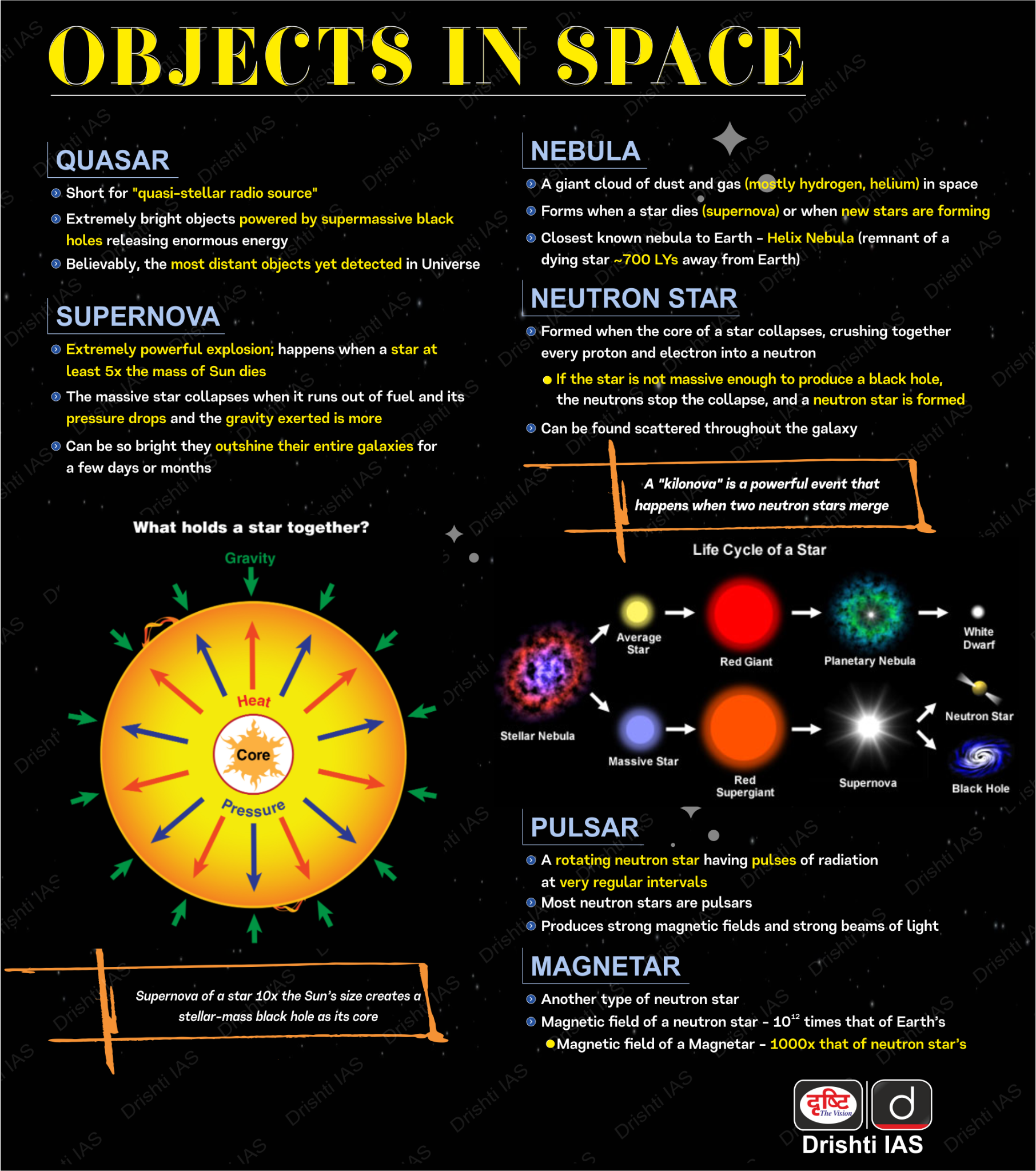String of Pearls Supernova | 11 Sep 2023
Why in News?
The James Webb Space Telescope (JWST) captured an image of SN1987A, a supernova that exploded decades ago, offering new insights into its history and evolution.
What is SN1987A Supernova?
- About:
- SN1987A exploded in 1987, becoming the nearest and brightest supernova visible from earth in nearly four centuries.
- SN1987A is situated 170,000 light-years away from Earth in the Large Magellanic Cloud.
- Now, the JWST is revealing intricate details of this cosmic event that have remained hidden until now.
- SN1987A exploded in 1987, becoming the nearest and brightest supernova visible from earth in nearly four centuries.
- Alias ‘String of Pearls’:
- SN1987A is often referred to as a "string of pearls” as it showcases a series of luminous rings composed of gases and dust expelled by the dying star in its various phases of collapse and explosion.
- This string of pearls comprises material ejected about 20,000 years before the supernova event, offering insights into the star's history and evolution.
- Unusual Facts about SN1987A:
- The star exploded when it was a blue supergiant (contrary to the theories as per which only red supergiant stars could explode).
- Emission of molecular hydrogen in the ring was not necessarily expected (also it couldn’t have been revealed without JWST).
Note:
- The Magellanic Clouds are two irregular, satellite galaxies that orbit the Milky Way.
- One is the Large Magellanic Cloud (LMC) and another is the Small Magellanic Cloud (SMC).
- While the Magellanic Clouds are visible to the unaided eye in the Southern Hemisphere, they cannot be observed from most northern latitudes.
- They serve as excellent laboratories for the study of very active stellar formation and evolution.
What is JWST?
- Considered a successor of the Hubble Telescope, it is the most powerful infrared telescope of NASA.
- It is an international collaboration between NASA, the European and Canadian Space Agencies.
- In 2022, NASA released a set of images taken with the JWST which were the deepest and finest infrared image of some of the most distant and oldest galaxies ever discovered.
UPSC Civil Services Examination, Previous Year Questions (PYQ)
Q. Consider the following pairs : (2023)
| Objects in space | Description | |
| 1. | Cepheids | Giant clouds of dust and gas in space |
| 2. | Nebulae | Stars which brighten and dim periodically |
| 3. | Pulsars | Neutron stars that are formed when massive stars run out of fuel and collapse |
How many of the above pairs are correctly matched?
(a) Only one
(b) Only two
(c) All three
(d) None
Ans: (d)

